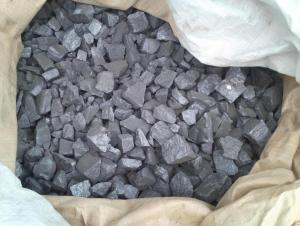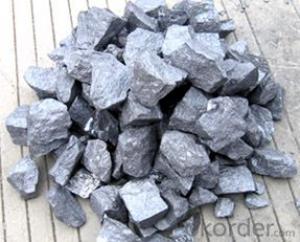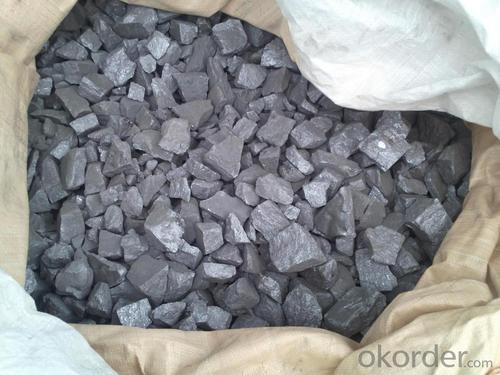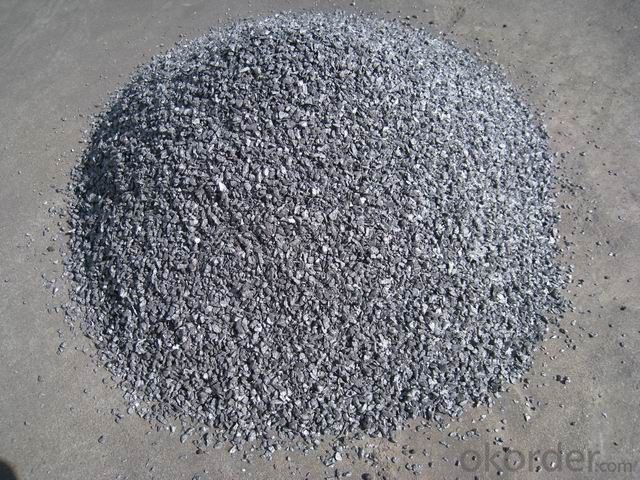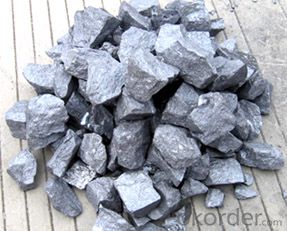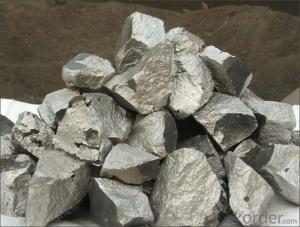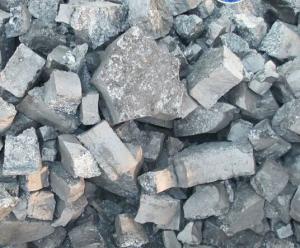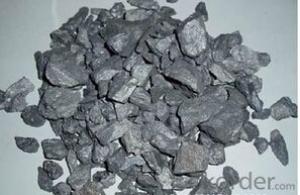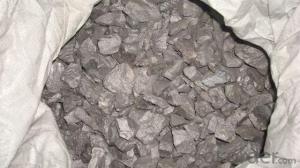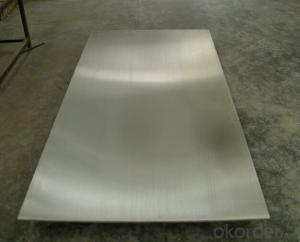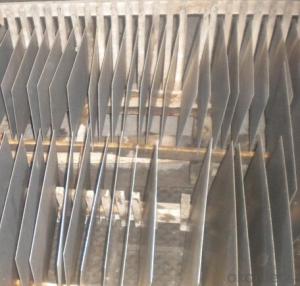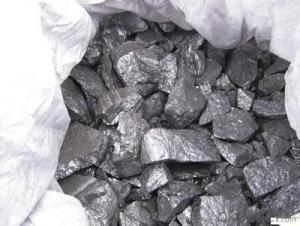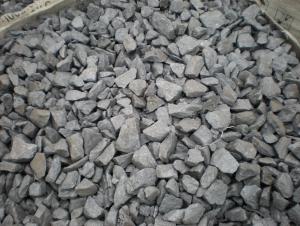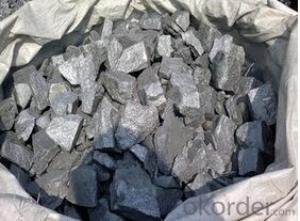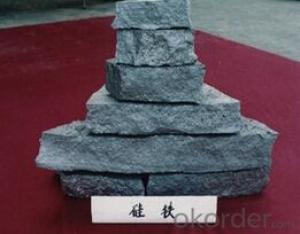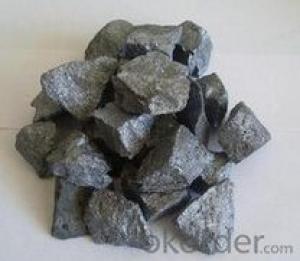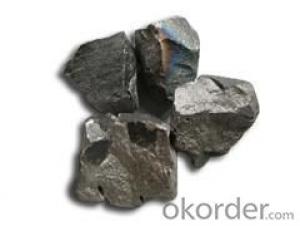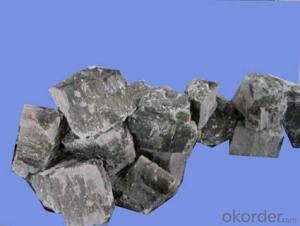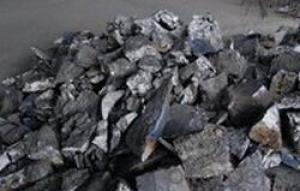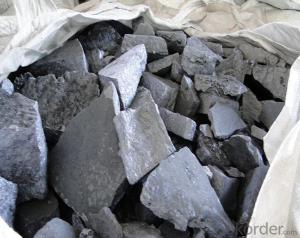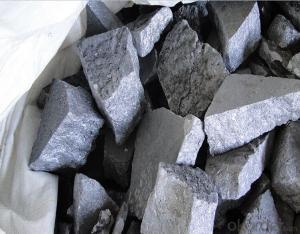FeSi 45 for Casting Manufactural and Steel Making
- Loading Port:
- China Main Port
- Payment Terms:
- TT or LC
- Min Order Qty:
- -
- Supply Capability:
- -
OKorder Service Pledge
OKorder Financial Service
You Might Also Like
FeSi 45 for Casting Manufactural and Steel Making
Description of FeSi 45
Ferro Silicon is a kind of ferroalloy which is composed of ferrum and silicon. Ferro Silicon uses coke, quartz (or silica) as raw materials and is made by electric furnace. Because silicon and oxygen are easily compound into SiO2, the ferrosilicon is often used as deoxidizer in steelmaking.
Application of FeSi 45
1. Ferrosilicon is often used as deoxidizer in steel- making.
2. Ferrosilicon also can be used as alloy elements join agent, which is widely used in low alloy steel, non-ferrous metal, bearing steel, heat-resistant steels and electrician silicon-steel.
3. It can be used as a reductant in ferroalloy production and chemical industry.
4. In iron industry it can be used as inoculant and nodulizer.
Specification of FeSi 45
Brand | Chemical Composition (%) | ||||||||||
Si | Al | Ca | P | S | C | Fe | |||||
<= | |||||||||||
FeSi75-A | 74.0-80.0 | 1.5 | 1 | 0.035 | 0.02 | 0.2 | Balance | ||||
FeSi75-B | 72.0-80.0 | 1.5 | 1 | 0.04 | 0.02 | 0.2 | Balance | ||||
FeSi72 | 72 | 1.5 | 1 | 0.04 | 0.02 | 0.2 | Balance | ||||
FeSi70 | 70 | 1.5 | 1 | 0.04 | 0.02 | 0.2 | Balance | ||||
FeSi65 | 65.0-72.0 | 2 | 1 | 0.04 | 0.02 | 0.2 | Balance | ||||
FeSi45 | 40.0-47.0 | 2 | 2 | 0.04 | 0.02 | 0.2 | Balance | ||||
Size of FeSi 45:0-3mm,3-10mm,10-100mm or as the customers’ requirements
Packing of FeSi 45: 25Kg/bag, 1MT/bag or as your requirements.
Pictures of FeSi 45:

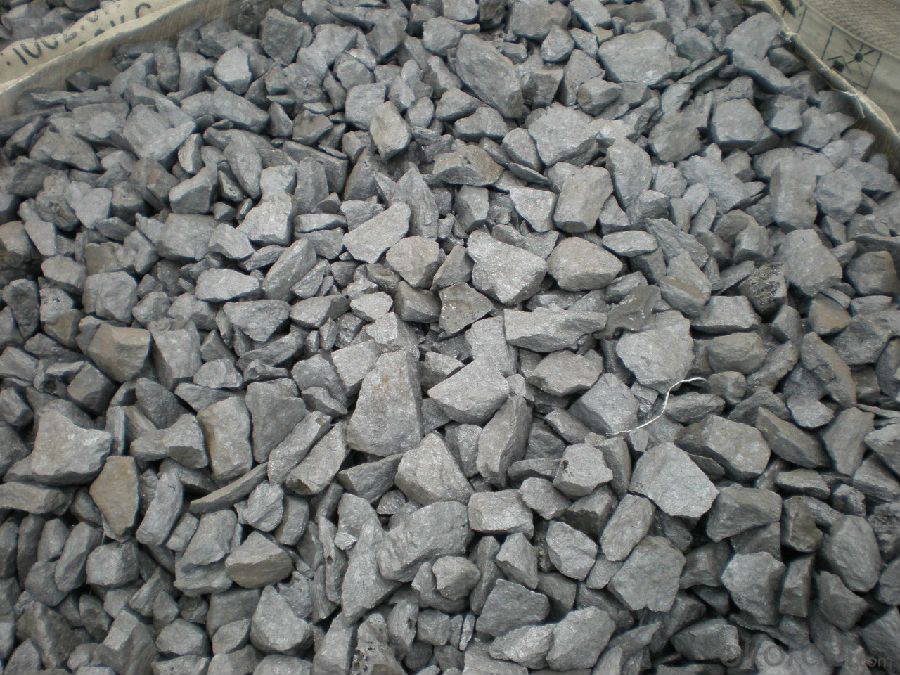
- Q: What material is that ultrafine cemented carbide?
- The main component of cemented carbide is tungsten carbide, so also known as tungsten steel, tungsten steel belongs to hard alloy, also called tungsten titanium alloy. The hardness can reach HRB89 to 95Tungsten steel production process is as follows: the powder is pressed into a blank, and then into the furnace heated to a certain temperature (sintering temperature), and keep a certain time (time), and then cooled down to obtain the required properties of tungsten materials.The characteristics of ultrafine cemented carbide is the main component of WC, compared to the hard phase and general hard alloy, the hard phase particles are very fine (average grain size less than 1um), so you can get a higher than the general hard alloy of the same hardness strength (toughness), edge grinding can be sharper and better wear resistance.
- Q: What is the specific gravity of cemented carbide?
- The carbon content of WC theory is 6.128% (atom 50%). When the carbon content of WC is greater than the theoretical carbon content, the free carbon (WC+C) appears in WC. The existence of free carbon leads to the growth of WC grain around it, resulting in uneven grain of cemented carbide. General requirements of tungsten carbide compound carbon high (more than 6.07%), free carbon (less than 0.05%), the total carbon depends on hard alloy production process and use scope.Under normal circumstances, the total WC carbon content in the vacuum sintering process of the paraffin process is mainly determined by the combined oxygen content in the block prior to sintering. An oxygen content should be increased by 0.75 parts of carbon, that is, WC total carbon, =6.13%+ oxygen content,% * 0.75 (assuming the sintering furnace is neutral atmosphere, in fact, most of the vacuum furnace is carburizing atmosphere, and the total carbon content of WC is less than the calculated value).At present, China's total carbon content of WC is roughly divided into three kinds: paraffin process, vacuum sintering, the total carbon content of WC is about 6.18 + 0.03% (free carbon will increase). The total carbon content of WC for hydrogen sintering of paraffin process is 6.13 + 0.03%. For rubber process, WC total carbon =5.90 + 0.03% is used for hydrogen sintering. The process is sometimes interleaved, so the determination of WC total carbon should be based on specific circumstances.
- Q: What does carbide K15-K20 refer to?
- generally used to process Cast Iron and non-ferrous metals15 represents its abrasion resistance or impact resistance,The smaller the value, the harder the hardness of the table is and the less resistant it is to the impact;
- Q: Is there a material that is more wear-resistant than cemented carbide and has a relatively low cost?
- If it is numerical control tool, it is more wearable than cemented carbide: ceramic, CBN, diamondAmong them, the lowest price of ceramics, diamond prices are highest
- Q: What are the types and specifications of carbide cutters?
- Tungsten, titanium, tantalum (niobium) carbidesIs the main component of tungsten carbide, titanium carbide, tantalum carbide (or niobium carbide) and cobalt. The hard alloy and hard alloy general or universal hard alloy.The grade by "YW" ("hard", "million" Pinyin prefix) and sequence number, such as the YW1. knife head has dozens of specifications, to be enumerated for reference!
- Q: What is the tungsten alloy blade, what is the difference with the hard alloy blade? What is it for?
- Tungsten alloy blade is a kind of hard alloy, metal processing used in the workpiece.
- Q: Can ceramic tools process cemented carbides?
- No, ceramic cutters are usually used to process cast iron (high speed machining) and high hardness steel (Cui Huogang).Generally, the hardness of ceramic tools reaches HRA91-95, while the hard alloy can reach HRA93.The main components of ceramic tool materials are Al2O3 with high hardness and melting point. Si3N4 and other oxides and nitrides, and then added a small amount of metal carbide, oxide or pure metal additives, formed by pressing, sintering, and then a tool material. Its hardness can reach HRA91 ~ 95, and the hardness of HRA80 can still be kept at the cutting temperature of 1200 DEG C. In addition, the chemical inertia is large, the friction coefficient is small, and the wear resistance is good, and the service life of the processed steel pieces is 10~12 times of that of the hard alloy.Its major disadvantages are brittleness, low bending strength and low impact toughness. Therefore, it is mainly used for semi finishing and finishing, high hardness, high strength steel and chilled cast iron and other materials. Commonly used ceramic cutting tools are alumina ceramics, composite alumina ceramics and composite silica ceramics.Taiwan is hard gold metal carbide with high heat resistance and high wear resistance (WC tungsten carbide, titanium carbide, tantalum niobium carbide TiC TaC, NbC etc.) and metal binder (cobalt, nickel and molybdenum) powder metallurgy products under high temperature sintering. The hardness of HRA8 9 ~ 93, 850 ~ 1000 DEG C high temperature resistant, has good abrasion resistance, allowing the use of the cutting speed can reach 100 ~ 300m / min, can be a variety of materials including machining hardened steel, therefore it is widely available.
- Q: Tungsten steel could be used to do is hard alloy knife?
- You can do all kinds of data of tungsten steel tool, it can be a knife. There is little precision mould
- Q: Why is Zhuzhou cemented carbide plant called (601) what is this code number? What does it stand for? 601, production of military?I found the Zhuzhou code factories such as: Zhuzhou hard alloy factory (code 601) Zhuzhou Southern Power Machinery Factory (code 331) Zhuzhou vehicle factory (code 430) add code 6+0+1=7 3+3+1=7 4+3+0=7 are equal to 7 this is the 7 to have the meaning or coincidence
- Construction 601 is for military services, and now the city has changed. Now there are many military factories are code names, only know its code name, I do not know what it is to do.
- Q: Printing requirements for cemented carbide
- Because of its superior properties such as high strength, hardness, excellent wear resistance and oxidation resistance, carbide is widely used in mechanical processing, petroleum mining, mold forming and structural wear-resistant parts and other fields. In the production of cemented carbide, sintering is the most important process. Even if the compacts are the same, different sintering processes have different effects on the properties of the sintered products. For a long time, many researchers have gradually formed a variety of sintering methods in actual production, including vacuum sintering, hot isostatic pressing sintering, vacuum follow-up hot isostatic pressing, sintering, hot isostatic pressing, etc..
Send your message to us
FeSi 45 for Casting Manufactural and Steel Making
- Loading Port:
- China Main Port
- Payment Terms:
- TT or LC
- Min Order Qty:
- -
- Supply Capability:
- -
OKorder Service Pledge
OKorder Financial Service
Similar products
Hot products
Hot Searches
Related keywords
